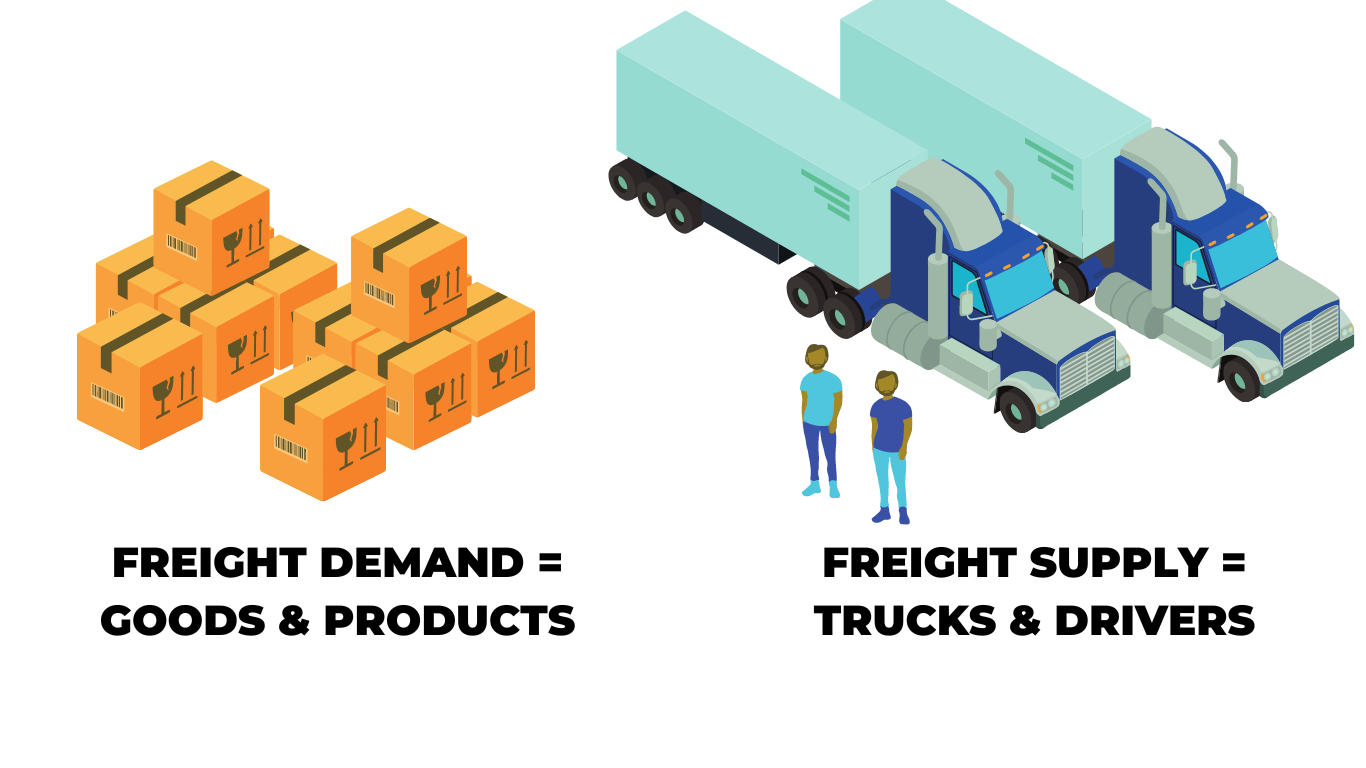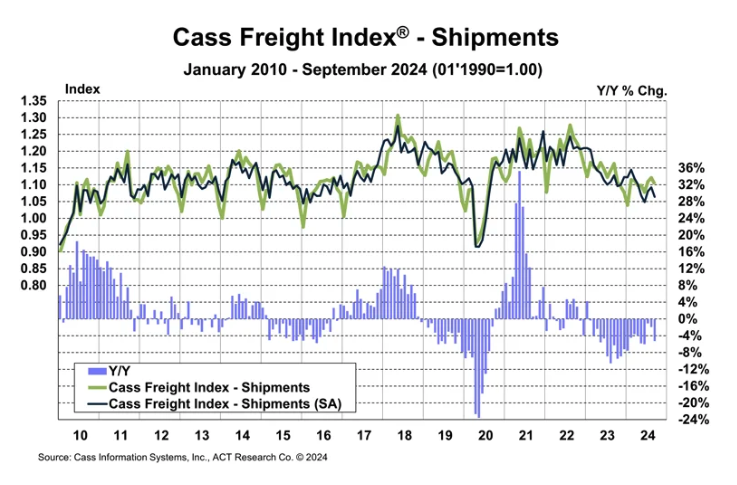The term freight refers to the movement of goods through the supply chain using various modes of transport, such as trucks, trains, ships, or planes. Freight rates represent the cost that shippers pay carriers for transporting their goods, especially within the truckload (TL) market.
These rates are influenced by a wide range of factors, including economic demand, available fleet capacity, fuel prices, the weight and size of the cargo, distance traveled, and the nature of the goods being transported. Shippers and carriers often negotiate these rates either through long-term contracts or on a spot basis. During key periods like request-for-proposal (RFP) season, companies rely on data from sources like ACT Research and DAT to make informed decisions and craft competitive bids.
Understanding current freight rates is crucial for businesses, as it allows them to adapt to the constantly changing truckload market and plan more effectively for the future.
What Factors Influence Freight Rates?
While the truckload cycle plays a major role in shaping freight rates, there are several other key factors at play. According to Tim Denoyer, an analyst at ACT, “It all comes down to supply and demand.â€
In the TL market, when demand outpaces the available supply of trucks and drivers, rates tend to rise. Conversely, when supply exceeds demand, rates fall. This dynamic creates a cyclical pattern that affects the entire industry.
To break it down further, let’s explore how economic demand and fleet capacity influence these rates.

Economic Demand
Almost every physical product sold in the economy is transported via full truckload freight. The retail and industrial sectors are the largest consumers of this type of shipping. As the saying goes: “If you bought it, a truck brought it.â€
When the economy is strong, consumer spending increases, leading to higher freight volumes. In contrast, during economic downturns, spending drops, reducing the need for freight transportation.
On a long-term scale, freight generation per person remains relatively stable. However, slower population growth can have lasting effects on overall freight demand and economic activity.
Freight demand typically peaks early in the economic cycle as businesses expand and build inventory. Later in the cycle, demand slows, and freight may enter a recessionary phase—often before broader economic downturns occur. These freight cycles usually last about two years on the upswing, with downturns ranging from a few months to two years.

The shipments component of the Cass Freight Index fell 1.7% month-over-month in September, following a 1.0% increase in August.
- The index dropped 2.6% m/m in SA terms from August to September.
- Shipments declined by 5.2% year-over-year in September after a 1.9% drop in August.
This decline coincides with continued private fleet insourcing, as Class 8 tractor sales rose sharply in Q3 after supply constraints in Q2.
After increasing by 13% in 2021 and 0.6% in 2022, the index fell 5.5% in 2023. With normal seasonality, the index is expected to drop around 3% y/y in October and between 4-5% in 2024.
Fleet Capacity
As fleet capacity increases, consumer spending patterns shift, and inventory levels adjust, which can lead to reduced freight demand.
Truck capacity is not static. Typically, Class 8 tractors over eleven years old are no longer used in the TL or LTL markets, though this varies across fleets. When conditions tighten, older trucks may be reintroduced to meet demand. Conversely, when the market softens, less efficient vehicles are often phased out due to lower freight rates.
How Do Rates Differ Between Types of Freight Trucking?
During a freight recession, we're seeing rates decline across the board. At the bottom of the cycle, the rate spread between flatbed and reefer trailers compared to dry vans tends to widen. As the cycle moves into its early phase, dry van rates begin to catch up, but the spread remains wide throughout the mid-cycle. By the late cycle, the spread begins to contract again.
But is there much difference between the types of trucking? Let's take a closer look.
Dry Van Trucking
Dry van trucks transport dry goods in fully enclosed trailers. This is the most common and standardized form of truckload shipping, primarily used for retail products.
Refrigerated Trucking
Refrigerated (reefer) trucks carry temperature-sensitive goods like food, pharmaceuticals, and electronics. Rates in the reefer market tend to be more stable compared to other segments.
Flatbed Trucking
Flatbed trucks haul goods on open platforms without sides or roofs, making them ideal for heavy or oversized cargo like machinery and construction materials. Flatbed rates are generally more volatile due to seasonal demand fluctuations.
All types of trucking are interconnected. While the freight and trailer types may differ, most tractors can handle any of the three main trailer styles.
How Do Freight Rates Differ Between Contract and Spot Trucking?
Contract freight rates are fixed agreements between shippers and carriers for a set period. Spot rates, on the other hand, are short-term, on-the-spot pricing for those without long-term contracts. While spot rates are often seen as more volatile, both options have their own advantages and disadvantages.
Businesses often participate in both the contract and spot markets to manage unexpected shipment changes and balance short- and long-term strategies. This dual approach helps ensure flexibility and resilience in a dynamic industry.
Reel Of Thread,Thread Reel,Silk Thread Reels,Sewing Thread Reels
Ningbo Dingming Machinery Manufacturing Co.,Ltd , https://www.dingmingmachine.com